High-Enthalpy Shock Tube (HEST) Facility
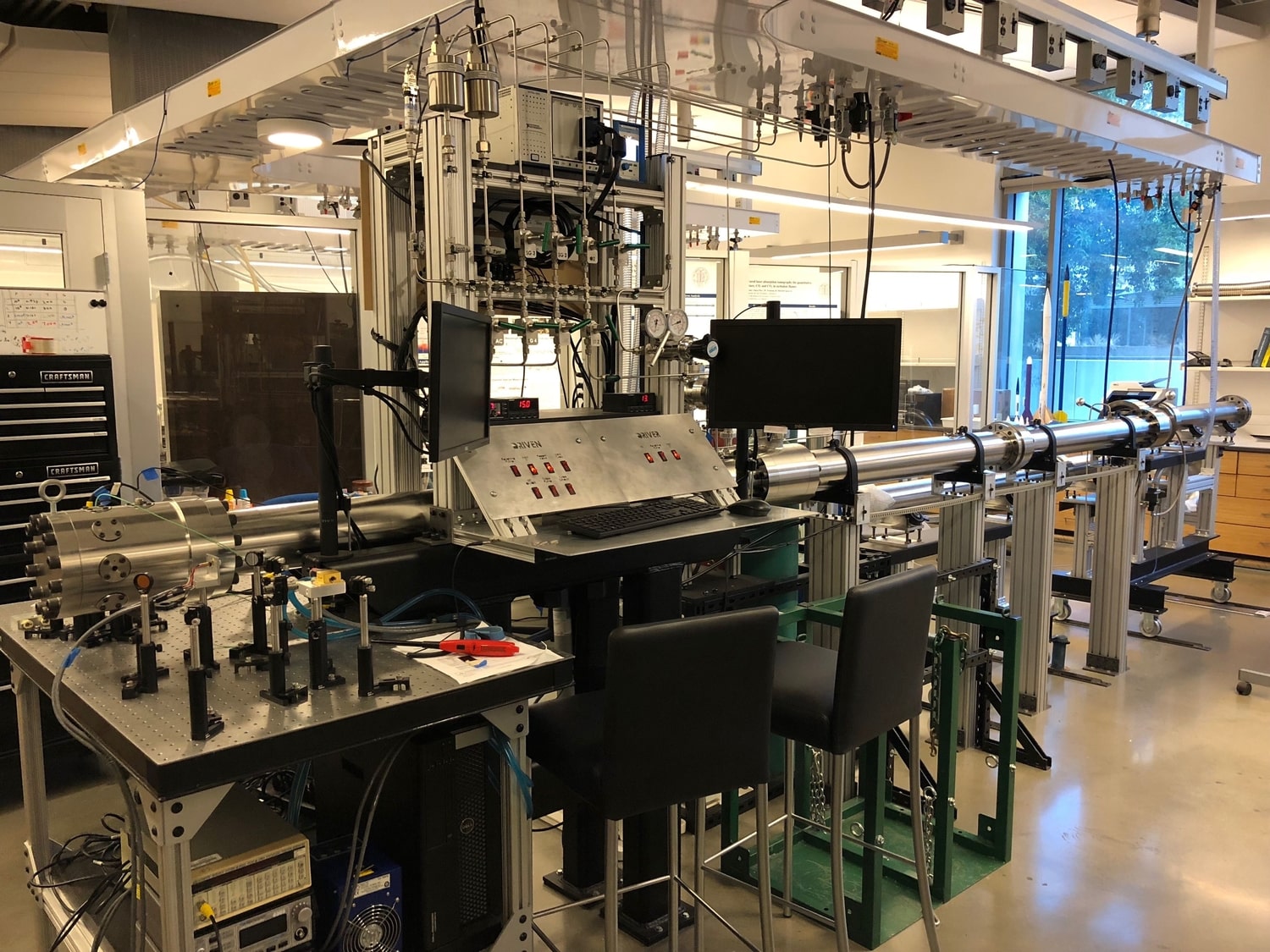
The HEST facility utilizes the principle of unsteady shock heating and compression to generate precisely-known high-temperature and high-pressure test conditions to further the basic understanding of gas dynamics, radiative heat transfer, and chemistry at high enthalpies. An optically-accessible test section allows for the integration of laser diagnostics to measure time-resolved profiles of species and temperature.
Key Elements:
-10 cm inner diameter, electropolished stainless steel
-Modular design with driver extension to maximize test times (up to 30 ms)
-Custom low-profile double groove-locking weldless flanges
-Hydrostatically pressure tested to 265 atm
-Post-reflected shock temperature range of 600-12,000 K
-Quick diaphragm loading mechanism
-Optical access ~2 cm from endwall
Detonation Impulse Tube (DIT) Facility
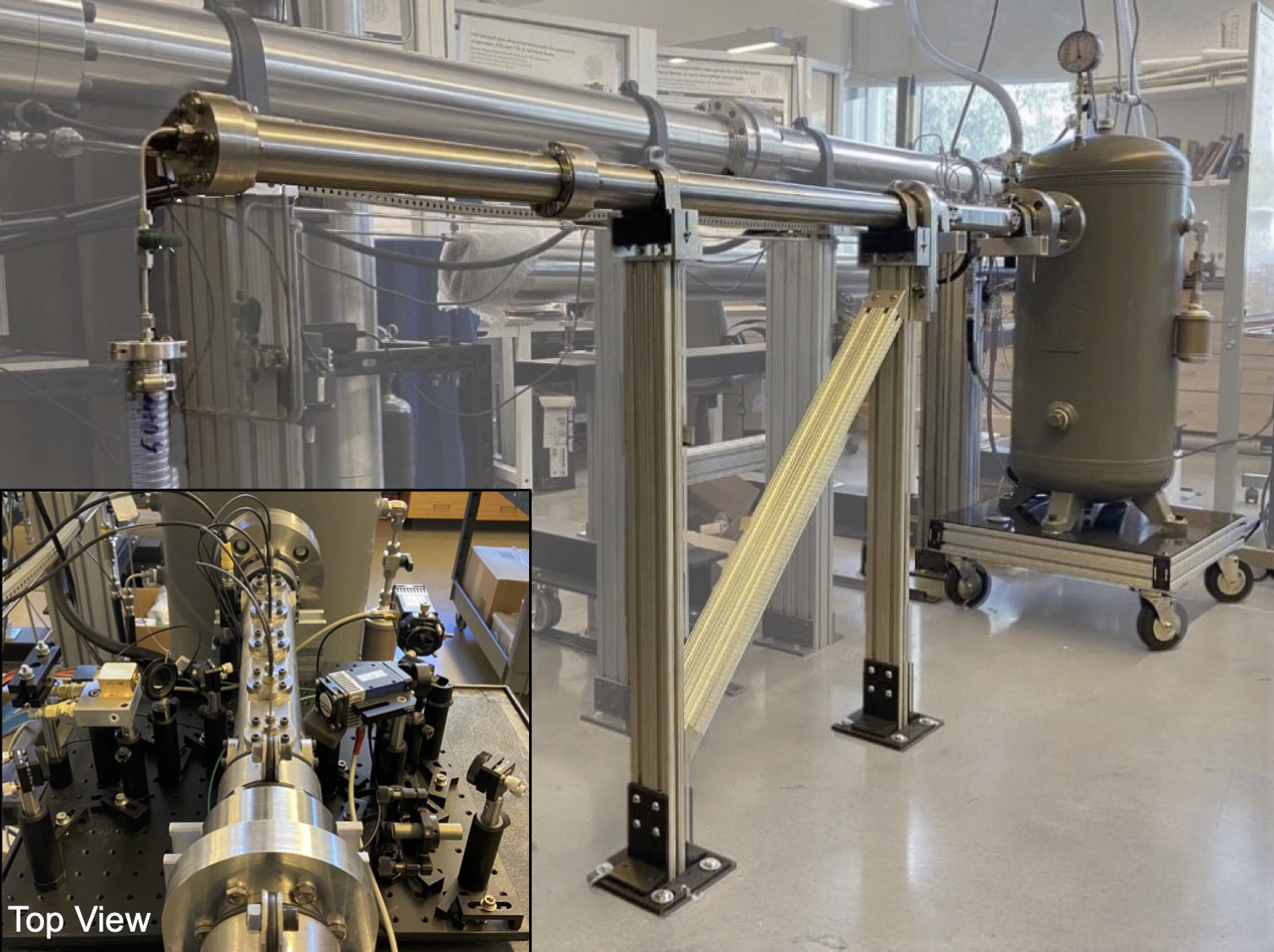
The detonation tube facility initiates near 1D detonation waves in premixed reactant mixtures at precisely-controlled initial pressures. A Shchelkin spiral assists the transition from deflagration to detonation. Optical access ports along the tube allow for high-speed optical measurements of post-combustion thermodynamics behind detonation waves via laser-based diagnostics.
Key Elements:
-5 piezoelectric sensors to measure detonation wave speeds
-Vacuum surge tank to fully contain and cool detonated mixtures
-Hydrostatically pressure tested to 200 atm
Solid Fuel Combustion Facility
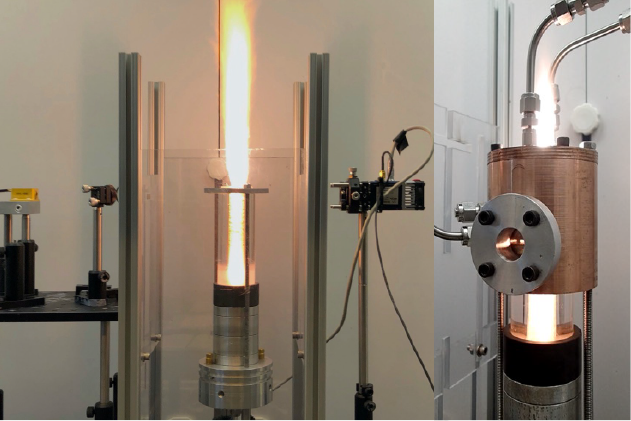
The solid fuel combustion facility is capable of testing small hybrid and solid rocket fuels at atmospheric pressure (left) as well as at elevated pressures up to 20 bar (right) with a post-combustion chamber. The facility is setup in a high-flow fume hood with a maximum exhaust rate of 1150 CFM. Load cells are integrated into the test stand for time-resolved thrust/burn profile measurements. Adjacent optical breadboards allow for integration of laser diagnostics for more detailed thermochemistry measurements. A modular thrust plate design accomodates fuel grains between 1/2-2" diameter and up to 10" in length.
Key Elements:
-High-speed data acquisition
-Remote valve control
-Electrical ignition
-Choked orifice for mass flow rate control
-8 ft. x 2 ft. enclosed work surface for auxilary equipment
Spectroscopy Gas Cells
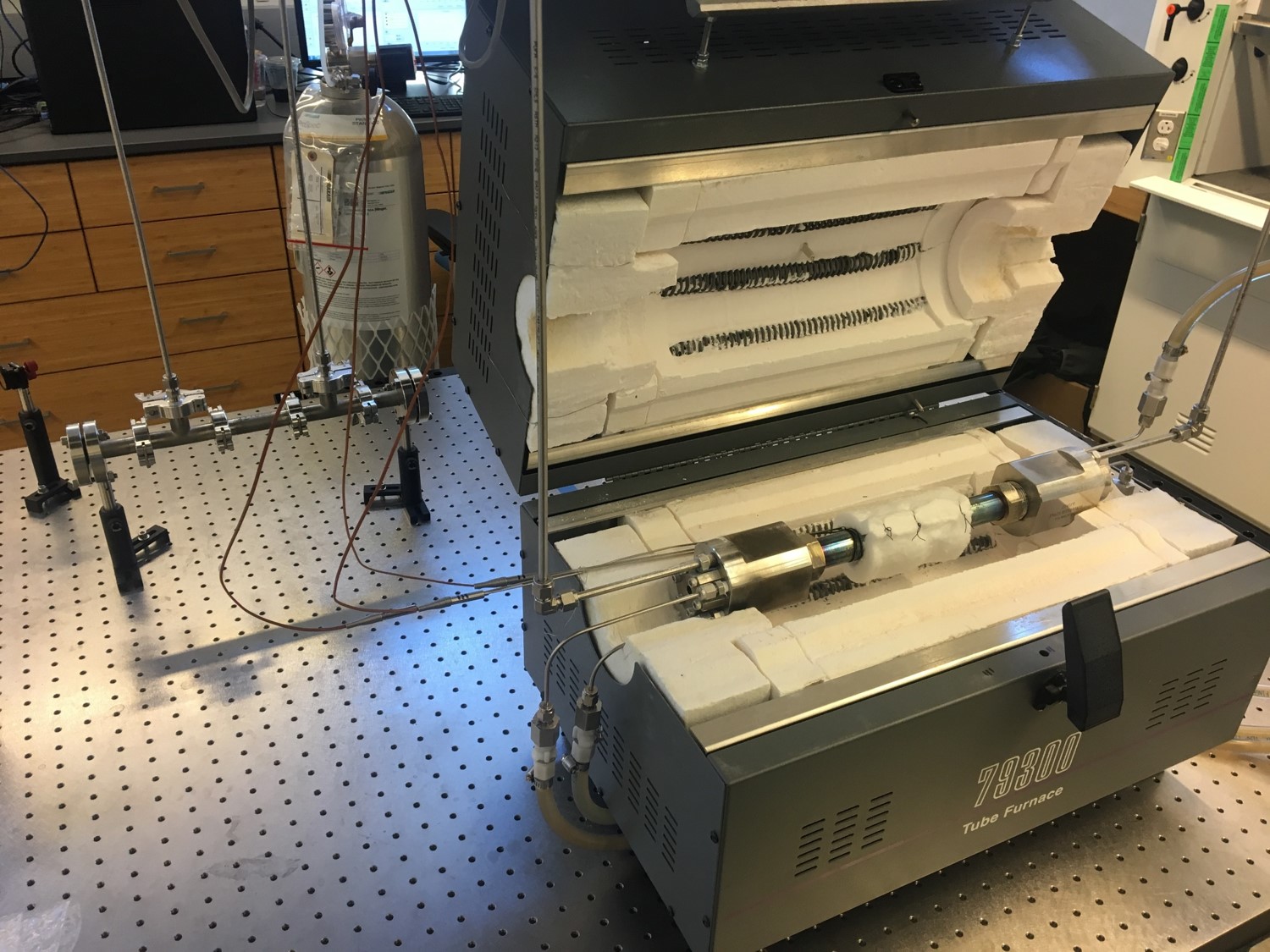
Optically-accessible gas cells provide precisely controlled environments for fundamental spectroscopy studies over a wide range of temperature and pressure. These gas cells often represent a starting point in spectroscopic sensor development. Pictured here are two cells, each capable of static or flow operation. A room-temperature cell provides for maximum flexibility in window materials for studies ranging from the ultra-violet to the THz at moderate pressures (less than 5 atm). A second custom high-pressure cell is integrated into a tube furnace for uniform heating of the test gas up to 1400 K and pressurizing up to 200 atm.
Key Elements:
-Mixing tank for generating custom gas mixtures
-Water-cooled window flanges for high-temperature cell
Low-Pressure Burner
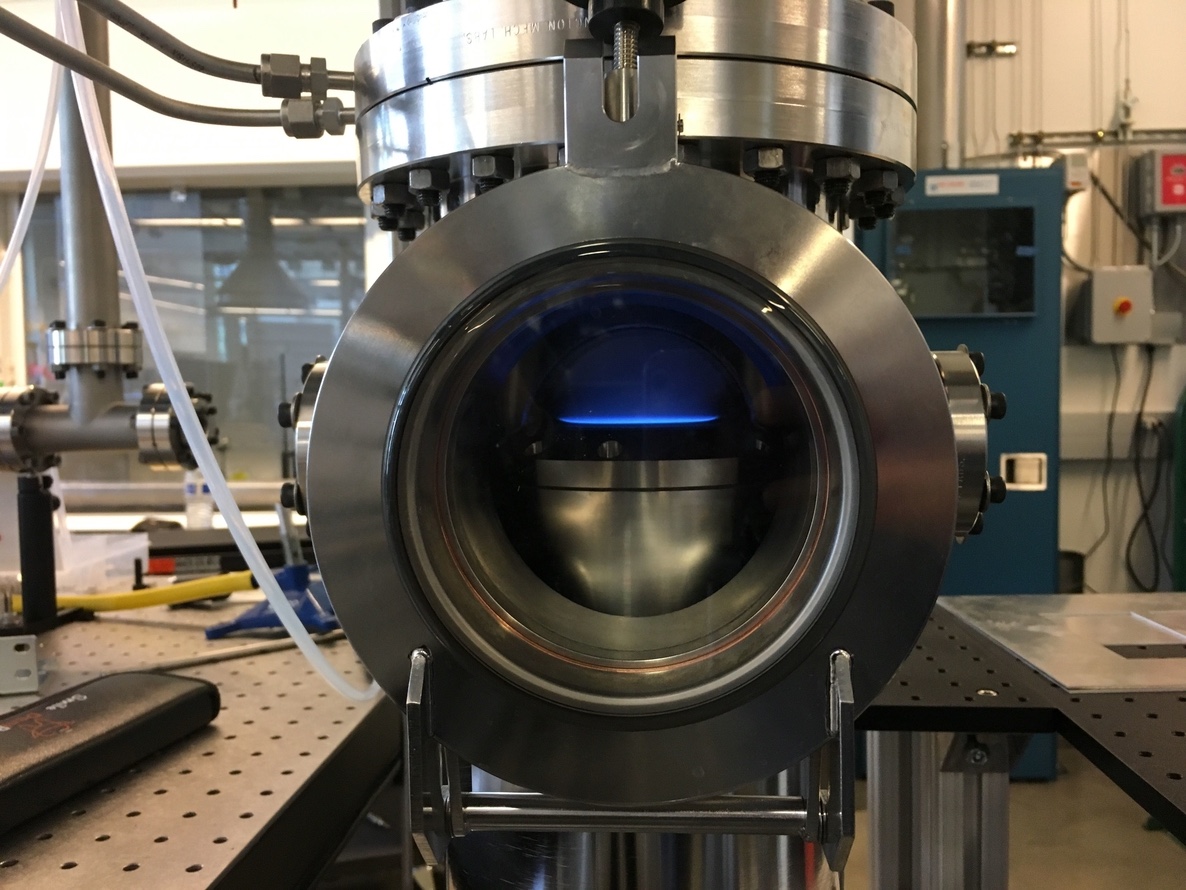
A pressure-controlled McKenna burner facility for investigating chemical kinetics and spectroscopy at elevated temperatures. The burner additionally exhausts to a heated optical gas cell to enable measurement of spectroscopic parameters of various species in a pressure-controlled combustion exhaust environment. The low-operating pressures of this experimental combustion facility complement the high operating pressures of the shock tube.
Key Elements:
-3 ft. long heated optical gas cell for studying combustion exhaust gases
-Flame visualization via 6" viewport windows
Mobile Propulsion Test Platform (PTP)
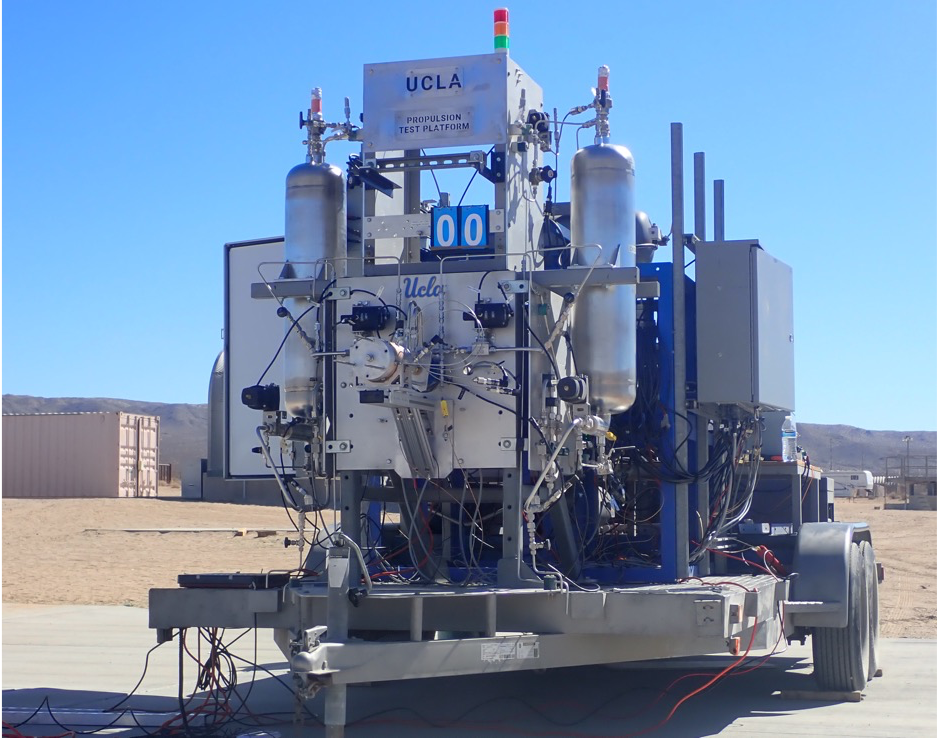
The Propulsion Test Platform (PTP) is a liquid bi-propellant mobile test facility used for static hot-fire testing of liquid rocket combustion devices. The PTP is mounted to a 8' x 21' trailer for easy transportation to and from UCLA and the Mojave Test Facility. The system uses a pressure blow-down configuration with propellant tank pressure rating of 1500 psi. It is capable of remote valve control, automated sequencing, and data acquisition, all controlled and monitored through a LabVIEW graphical user interface. The PTP is compatible with hypergolic propellants and can be used for egine testing up to 1,000 lbf thrust.
Key Elements:
-Expandable DAQ system for real-time system monitoring (P, T, etc.)
-Venturi flow meter manifolds for mass-flow-rate measurements over a range of testing conditions
Mojave Test Facility
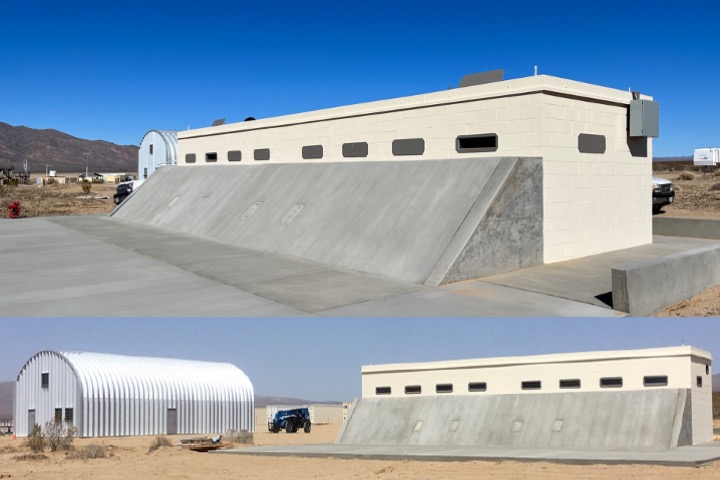
The Mojave propulsion test facility provides unique high-energy test and launch infrastructure for research and educational activities. The facility primarily consists of a dedicated control blockhouse and three test pads, along with storage and work areas. Underground data, power, and water transmission infrastructure provide for remote operations. The facility is located near Cantil, CA in the Mojave desert approximately 2 hours north of UCLA main campus.
Key Elements:
-Wide range of propellants can be tested
-Operated in partnership with Polaris, Inc.
Mojave Test Facility (Under Construction)

The Mojave propulsion test facility will provide unique high-energy test and launch infrastructure for research and educational activities. The facility primarily consists of a dedicated control blockhouse and three test pads, along with storage and work areas. Underground data, power, and water transmission infrastructure provide for remote operations. The facility is located near Cantil, CA in the Mojave desert approximately 2 hours north of UCLA main campus.
Key Elements:
-Wide range of propellants can be tested
-Operated in partnersip with Polaris, Inc.

